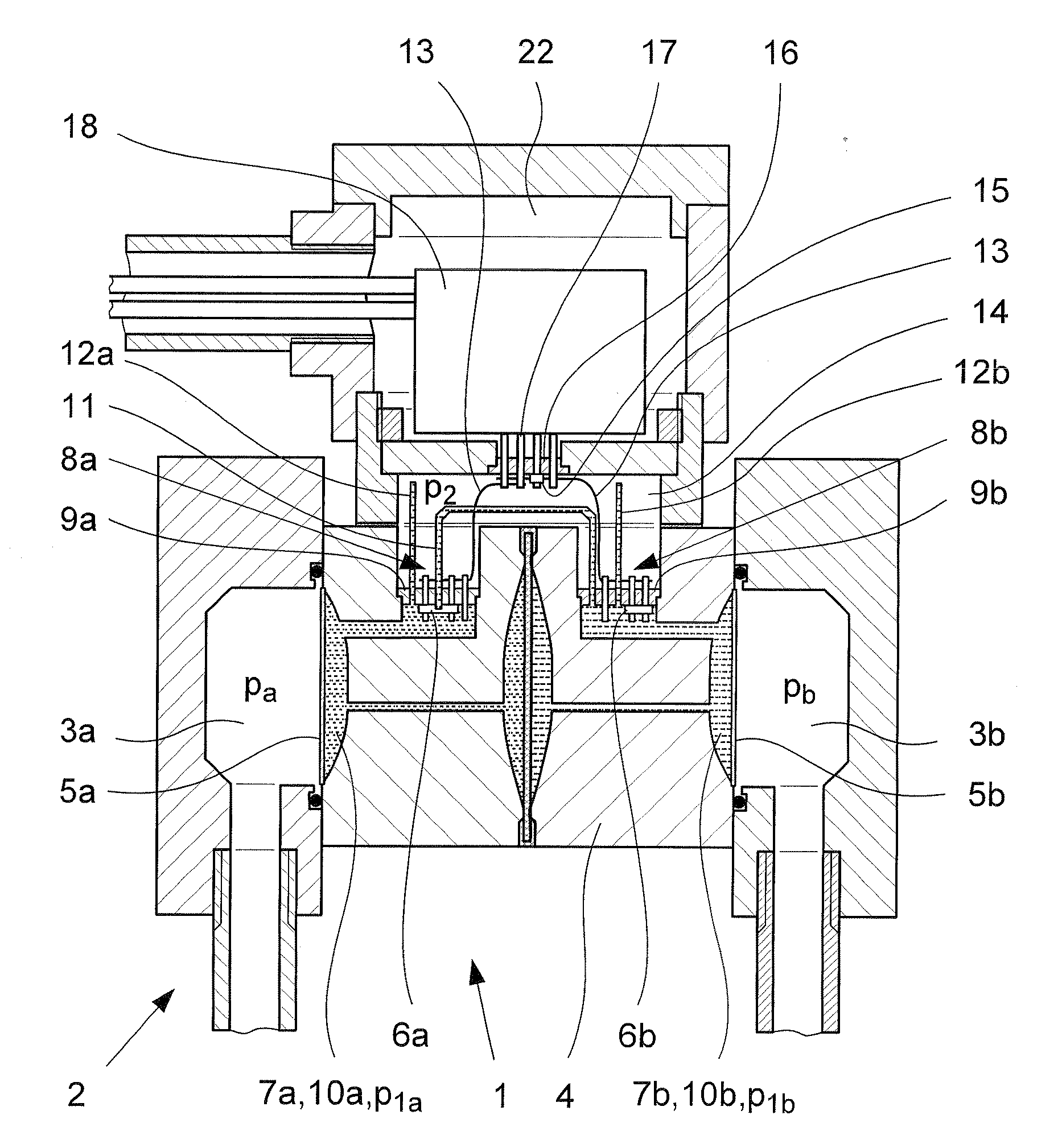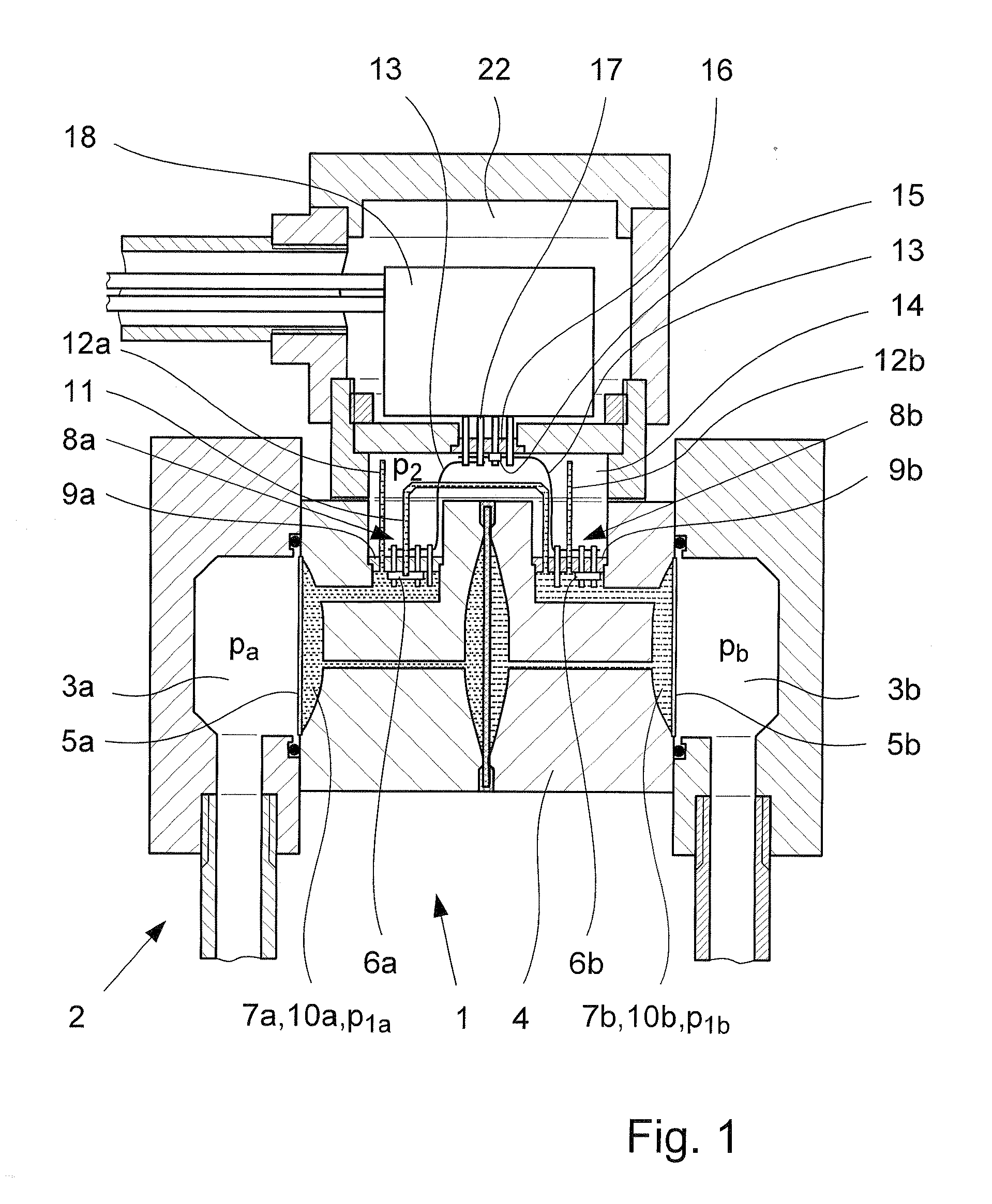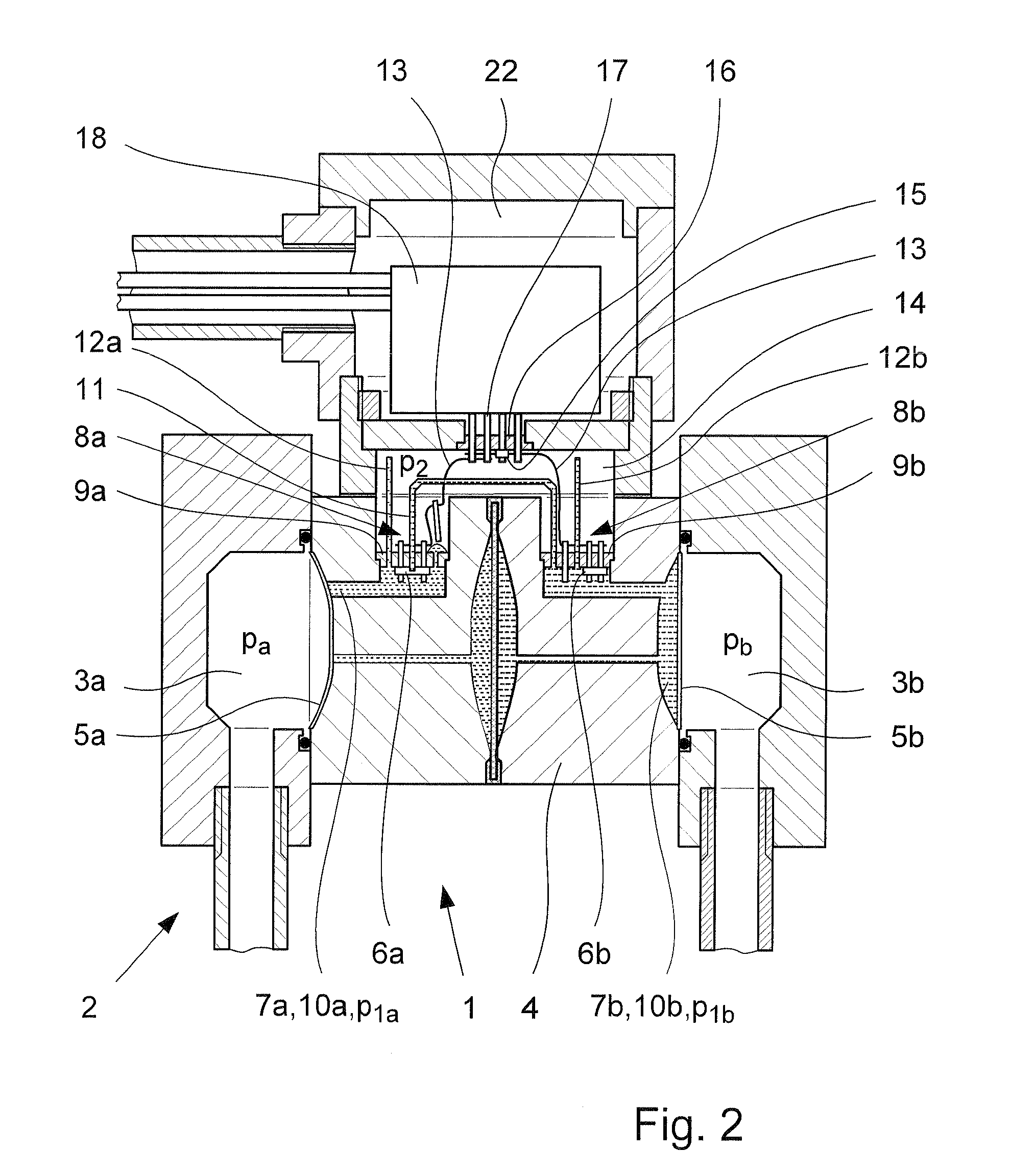Pressure transducer and method for monitoring the state of a pressure transducer and pressure sensor
a technology of pressure transducer and pressure sensor, which is applied in the direction of fluid pressure measurement using elastically deformable gauges, measuring devices, instruments, etc., can solve the problems of diaphragm, process media cannot be kept away from the interior of the pressure transducer, and significant disturbances in the entire process
- Summary
- Abstract
- Description
- Claims
- Application Information
AI Technical Summary
Benefits of technology
Problems solved by technology
Method used
Image
Examples
Embodiment Construction
[0034]In FIGS. 1 to 7, a pressure transducer 1 is shown in connection with a complete pressure sensor which happens to be a combined absolute and difference pressure sensor. The pressure transducer 1 serves the purpose of determining at least one pressure pa, pb in a process media 3a, 3b. The pressure transducer 1 has a housing 4 with a separating diaphragm 5a, 5b, a first pressure-sensing element 6a, 6b, a contact media 7a, 7b, multiple connection elements 8a, 8b and a first seal 9a, 9b. Since the described pressure transducer 1—by all means, also—is a matter of a difference pressure transducer, practically all of the structures coupled with measurement exist twice, which, however, does not change the fact that the described and shown pressure transducer 1 as well as the described and shown pressure sensor 2 and the method described using the figures can be realized just as easily as with a simple (absolute) pressure sensor.
[0035]The separating diaphragm 5a, 5b at hand is of Hallst...
PUM
 Login to View More
Login to View More Abstract
Description
Claims
Application Information
 Login to View More
Login to View More - R&D
- Intellectual Property
- Life Sciences
- Materials
- Tech Scout
- Unparalleled Data Quality
- Higher Quality Content
- 60% Fewer Hallucinations
Browse by: Latest US Patents, China's latest patents, Technical Efficacy Thesaurus, Application Domain, Technology Topic, Popular Technical Reports.
© 2025 PatSnap. All rights reserved.Legal|Privacy policy|Modern Slavery Act Transparency Statement|Sitemap|About US| Contact US: help@patsnap.com



